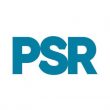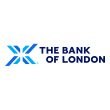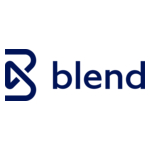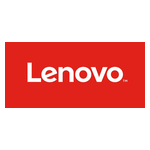ISO 20022: The clock is ticking, so get ready
Payments are essential to everyone’s lives. One could say they make the world go round—and in many ways, they’d be right.

The ISO clock is officially ticking—make sure you’re ready before time is up
Consumers and businesses of all sizes move money in multiple currencies every second of the day across the globe. Underpinning this activity is a massive network of banks and inter-bank clearing and messaging networks that provide the “rails” for processing and delivering funds. These, in turn, depend on an equally large ecosystem of financial technology firms to provide the necessary platforms and services to make it all work… and make the world of payments continue going round at every hour of every day.
So, one can imagine the complex task facing the payments industry as it works toward the mandate to implement the ISO 20022 standard globally by November 2025. Many of our clients at Santander have shared that the sheer scale of this endeavour can feel daunting at times. Luckily, fortune favours the prepared, and when it comes to ISO 20022, now’s the perfect moment to lock in and prepare for the shift.
For those less familiar with the term, ISO 20022 is a global standard for payments. While not necessarily new (it was first introduced 20 years ago and has been adopted by banks and clearing systems in over 70 countries to this point), it has established itself as the target state for payments globally by virtue of its key attributes: “data structure” and “data richness”.
The ultimate result of this massive effort will be a better end-to-end experience for all participants in the payments chain. Improved system and network interoperability, greater data quality, higher straight-thru rates and increased integration flexibility will generate efficiencies throughout; not just for financial institutions, but also for the companies they serve and – by extension – those clients’ counterparties. Conversely, failure to transition to the new standard will perpetuate some of the difficulties – including payment delays and high costs – we all experience due to unclear and/or insufficient data.
So what exactly defines “data structure” and “data richness” when it comes to ISO 20022?
“Data structure” refers to the standardisation of certain information – such as addresses – into clearly defined fields, in contrast to current formats that permit free-form information. For example, instead of the current practice of communicating a payee’s address in four lines of unstructured text, ISO 20022 specifies a field for “street,” a field for “building number,” a field for “city,” and so on. This structure mitigates the delays that can sometimes occur either in the middle of the payment chain (as banks perform required anti-fraud and other compliance evaluations) or at the end of the payment chain (as the beneficiary bank attempts to apply the payment to the correct beneficiary).
“Data richness” refers to the extent of data that can accompany a payment. Non-ISO 20022 payments are limited in the amount of data they (and the clearing systems through which they are processed) can carry. This impacts the ability for some companies to properly apply payments against lengthy invoices, particularly when a single payment is made that covers multiple invoices. ISO 20022 introduces significantly more data carrying capacity to payments, mitigating the posting and reconciliation errors and inefficiencies that can otherwise result in the current system.
While there is a lot of talk and action in the banking circles with respect to ISO 20022 by virtue of the firm 2025 deadlines established by regulators and clearing networks, it’s important to understand that reaping the benefits of this standards transition requires much broader engagement. Companies, their systems vendors and trading counterparties must all be working toward the same objective, adapting their applications, processes, data management and reporting practices to accommodate the new structure and increased amount of data.
At this point in time, there’s still ample room for businesses to assess and adjust processes. That’s why at Santander we’re committed to supporting our clients through the ISO 20022 transition, and we’re strongly encouraging companies to take the time now to evaluate their own payment processes and approach their suppliers of goods, services and system infrastructure to understand what, if any, changes are anticipated or required.
For example, a company in Europe that supplies a company in the US may submit invoices that, in keeping with ISO’s key tenets, specifies payment terms and instructions that carry extended and/or structured data. In such cases, the US company must evaluate its accounts payable process and systems to determine if they are able to handle this data or, if not, what complications can arise, such as data truncation and reconciliation headaches. Similarly, if the US company is a supplier to a European company, it may receive payments in the ISO 20022 format and must be able to apply the data within its accounts receivable systems in order to ensure payments for open invoices are properly accounted for and posted.
In our experience, some companies’ payment files are already ISO 20022 compliant. These organisations will enjoy a relatively seamless transition next year. In other cases, awareness of ISO 20022 itself is quite low, and change management in anticipation of the standard should begin as soon as possible.
Even though the transition seems like it’s in the distant future, it’s closer than we all think. There’s no time like the present to ensure that you’re ready for the arrival of ISO 20022 and are prepared to avail of the benefits it will bring. The ISO clock is officially ticking—make sure you’re ready before time is up.










































